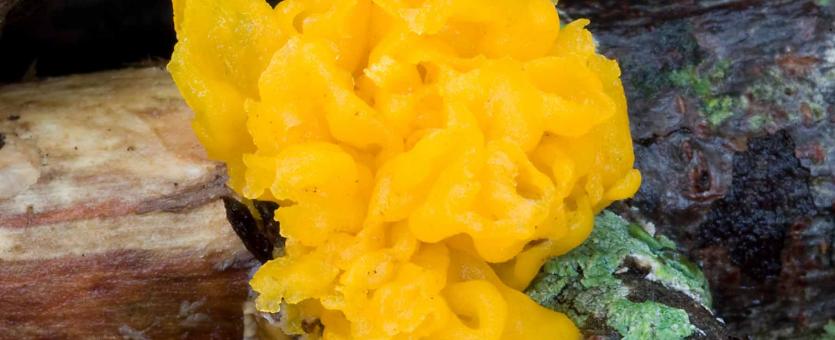
Small, yellow, irregularly lobed, gelatinous masses. Grows on dead deciduous wood. Year-round. Fruiting body irregularly lobed, brainlike; sulfur yellow to pale yellow; texture gelatinous. Spore print yellowish. Spores magnified are oval, elliptical, smooth.
Lookalikes: There are other yellowish “jellies,” but none of them are known to be poisonous. The pale jelly roll (Exidia alba) can be similar in size and shape, but it is white.
Fruiting body width: 1–3 inches; height: 1¼ to 1⅝ inches.
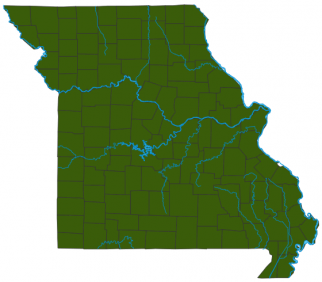
Statewide.
Habitat and Conservation
Grows in masses on dead deciduous wood, especially oaks. It is sometimes found during warm spells in winter.
Status
Edible. Witches’ butter has little flavor, but the texture and color can be appealing. It can be used in cooking as an addition to soups and stews.
Life Cycle
The gelatinous "fruiting bodies" are temporary. This fungus's full-time job is to inhabit dead wood as a parasite that gets nourishment by digesting the tissues of an unrelated fungus ( a crust-like fungus that is itself parasitizing and maybe killing the tree). Witches' butter is therefore a parasite of a parasite! The yellow jellylike masses create and disperse spores, which float away to begin more "witches' butter" elsewhere.
Human Connections
Fungi can be strikingly beautiful—or breathtakingly strange! Discovering fungi can bring out our innate capacity for awe and wonder. Some species, like this one, are edible. (Never eat any mushroom unless you're 100 percent sure of the identification!) All are fascinating in their own ways.
Ecosystem Connections
Nature is full of intricate relationships among organisms, and “food chains” only begin to explain the situation. Witches’ butter is a parasite of a parasite, but it is not the only such organism. There are cases among insects where three levels of parasitism occur!
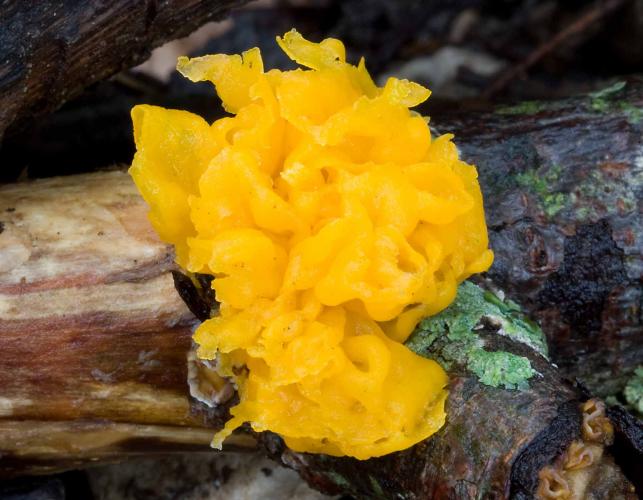
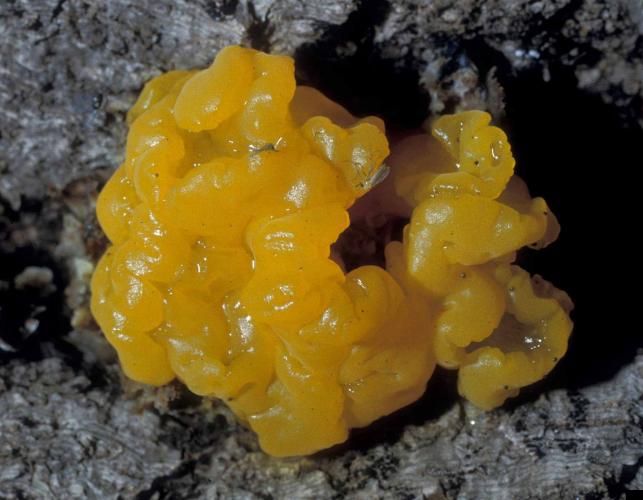
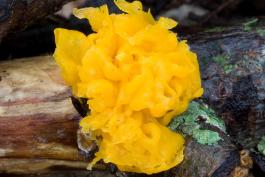
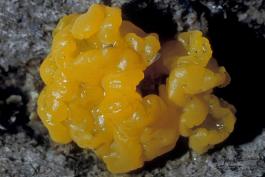
Mushrooms are a lot like plants, but they lack chlorophyll and have to take nutrients from other materials. Mushrooms are neither plants nor animals. They are in a different kingdom — the fungi. Fungi include the familiar mushroom-forming species, plus the yeasts, molds, smuts, and rusts.
Always be cautious when eating edible mushrooms. Be absolutely sure of the ID, and only eat a small amount the first time you try it to avoid a reaction..





















